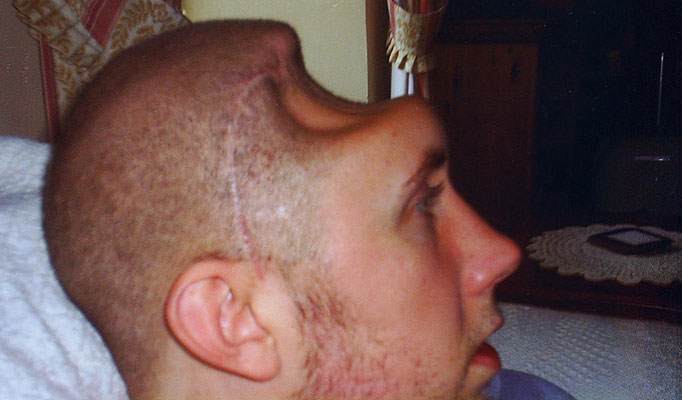
Marybeth Tinning (née Roe, born on September 11, 1942) is an American serial killer currently serving a 20 years to life sentence after being convicted of the murder of (ONLY)one of her children(although she murdered 9). Her case is held to be one of the most extreme cases of Münchausen syndrome.
Marybeth Tinning had a peculiar way of coping with the nagging sense of inadequacy felt by so many new mothers.
She murdered her babies.
Unthinkable it may be, but even more jaw dropping was that it took 14 years and nine tiny corpses for authorities to take action.
In the opinion of doctors, the string of tragedies that befell this Schenectady, N.Y., housewife and her husband, Joe, was a matter of bad luck or bad genes, even though her sixth child, Michael, was not a blood relation. The Tinnings adopted him in 1978 but he died in 1981, at the age of 2.

The last of the couple's doomed babies was Tami Lynne, a 31/2-month-old bundle of smiles and black curls, to all appearances, a healthy baby. But sometime during the night of Dec. 19, 1985, her mother said, she just stopped breathing.
An autopsy found nothing physically wrong, and it seemed as if Sudden Infant Death Syndrome had struck again.
Tami Lynne was the ninth Tinning child who would not make it to kindergarten.
The Tinnings' third-born, Jennifer, was the first to die. She entered the world on Dec. 26, 1971, and exited one week later, a victim of spinal meningitis. Jennifer's was the only death where doctors could easily pinpoint a cause. For all the others, the reasons were vague - SIDS, pneumonia, or a hidden genetic flaw.
Smothering, however, could have similar effects on the body of an infant, but for years no one considered the possibility.
Maybe the strain of losing Jennifer was too much for Tinning, a blue-collar girl who grew up in nearby Duanesburg, the daughter of a press operator for General Electric.
Or, some experts hypothesized, this drab housewife became addicted to being the star of the show, the bereaved mother at the funeral of her child. Mourners at these somber events would recall that Tinning seemed detached, sometimes even happy, as she bid farewell to all her children, wrote Joyce Egginton in her book on the case, "From Cradle to Grave."
Whatever it was that unhinged her mind, after this first loss, Tinning children began to drop one after another. Next to go, within the same month, was Jennifer's big brother, Joseph Jr., 2. His mother brought him to the emergency room, complaining that he'd had a seizure. Doctors observed him in the hospital for two days and sent him home. A few hours later, his mother brought him back to the hospital, dead, apparently of SIDS.
Tragedy struck again on March 2, when Tinning's firstborn, Barbara, 4, died under mysterious circumstances. Reye's Syndrome, another mysterious killer, was thought to be the likely culprit.
Undaunted by three deaths in as many months, the Tinnings continued to try to build a family, with little success. A son, Timothy, born a few days before Thanksgiving, 1973, didn't make it to Christmas. Another boy, Nathan, was born in the spring of 1975 and died before the first autumn leaves. A daughter, Mary Frances, died in February 1978, at 4 months old, followed by a son, Jonathan, who died in March 1980, at around the same age.
To medical professionals in town, the scene had become a familiar one. Marybeth, in hysterics, would rush to the emergency room with a blue-tinged child in her arms and an improbable story on her lips.
IN NATHAN'S case, she said she was driving with him, and he just stopped breathing, and with Mary Frances, it was spontaneous seizures. Michael, the adopted boy, also just stopped breathing,
Neighbors, friends and family grew more suspicious with each death. When they saw Marybeth with a belly, they'd wonder, "How long will this one last?"
Investigators had an eye on the situation for years. After Tami Lynne's death, they decided it was time to ask the grieving mother some tough questions. After a long interrogation, she admitted to killing three: Timothy, Nathan and Tami Lynne.
"I smothered them each with a pillow because I'm not a good mother," she said.
The bodies of three of Tinning's children were exhumed, but little was learned from them, so advanced was the decomposition.
Tinning was charged with the murder of only one child, Tami Lynne.
Her husband, Joe, had been questioned, but it was quickly determined that he had no hand in the killings. Marybeth was alone with the babies at the time. Oddly, he stood by her, even when it was revealed that he had almost become one of her victims. In 1974, a high-stress period for the couple, a near-fatal dose of barbiturates somehow got into his grape juice. His wife later admitted to mixing up the cocktail with pills she had picked up for a friend's epileptic child.
At her trial, which opened on June 22, 1987, her attorneys tried to inject a dose of reasonable doubt with scientific experts. They said it was possible that a rare genetic brain disorder had afflicted at least two of the children, and perhaps all of them.
But the prosecution easily poked holes in the theory. On July 17, after three days of deliberation, the jury found Tinning guilty of murder in the second degree. She was sentenced to 20 years to life.
"I will never stop fighting to prove my innocence," she told the court. "One day the whole world will know that I am innocent."
This past January, Tinning, now 68, stood for the third time before the parole board. The Albany Times-Union reported that she tried to explain her actions by saying the deaths of her other children had turned her into "a damaged worthless piece of person and when my daughter was young, in my state of mind at that time, I just believed that she was going to die also. So I just did it."
Her excuse didn't evoke much sympathy, and she was turned down. She becomes eligible for parole again in 2013.










 There were also several restraining orders filed against him - including one filed by an ex-girlfriend who claimed Gray threatened her and her children, local court officials said.
There were also several restraining orders filed against him - including one filed by an ex-girlfriend who claimed Gray threatened her and her children, local court officials said.



 Elizabeth Batain, 38, was executed by lethal injection at a prison in the southern Chinese city of Shenzhen. Sally Ordinario-Villanueva, 32, and Ramon Credo, 42, were executed in the port city of Xiamen.
Elizabeth Batain, 38, was executed by lethal injection at a prison in the southern Chinese city of Shenzhen. Sally Ordinario-Villanueva, 32, and Ramon Credo, 42, were executed in the port city of Xiamen.



















 She suffers from a congenital syndrome Taika Ambras hypertrichosis, or better known as Werewolf Syndrome, associated with changes in the chromosomes. Supatra – one of 50 people in the world who suffers from this rare genetic disorder. Her face, ears, hands, legs and back are covered in hair that resist even laser removal, on the contrary, becoming thicker and thicker, so the girl’s mother just regular trims the hair on the face.Now that school tormentors are no longer worried about the girl Supatra finally joined the team of class and even became popular. “There were a few people who teased me that I am a monkey, but they no longer do. ” – Says the girl.
She suffers from a congenital syndrome Taika Ambras hypertrichosis, or better known as Werewolf Syndrome, associated with changes in the chromosomes. Supatra – one of 50 people in the world who suffers from this rare genetic disorder. Her face, ears, hands, legs and back are covered in hair that resist even laser removal, on the contrary, becoming thicker and thicker, so the girl’s mother just regular trims the hair on the face.Now that school tormentors are no longer worried about the girl Supatra finally joined the team of class and even became popular. “There were a few people who teased me that I am a monkey, but they no longer do. ” – Says the girl. “I’m used to this state, I do not feel the hair on my face, though becauseof it I do not always see what is happening around me. I hope that someday they will be able to cut it off,” – she says.
“I’m used to this state, I do not feel the hair on my face, though becauseof it I do not always see what is happening around me. I hope that someday they will be able to cut it off,” – she says.
 Supatra with friends in the school library.
Supatra with friends in the school library. Like many children her age, Supatra likes to swim, dance to her favorite music and play with friends.
Like many children her age, Supatra likes to swim, dance to her favorite music and play with friends. Unfortunately apart from hypertrichosis she has another problem – she does not have teeth.
Unfortunately apart from hypertrichosis she has another problem – she does not have teeth. Supatra with her parents on their way to the night market Suan Lum Bangkok.
Supatra with her parents on their way to the night market Suan Lum Bangkok. Supatra poses a photographer with her school friends.
Supatra poses a photographer with her school friends. Supatra in gym class.
Supatra in gym class.






